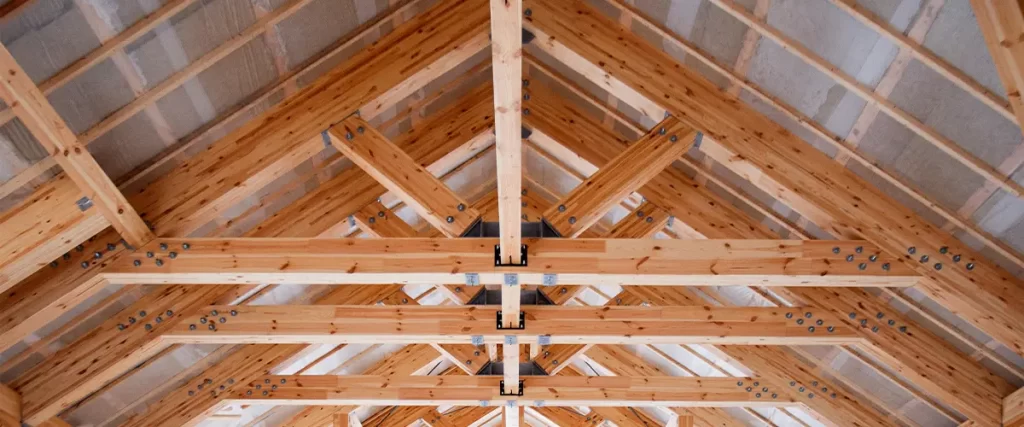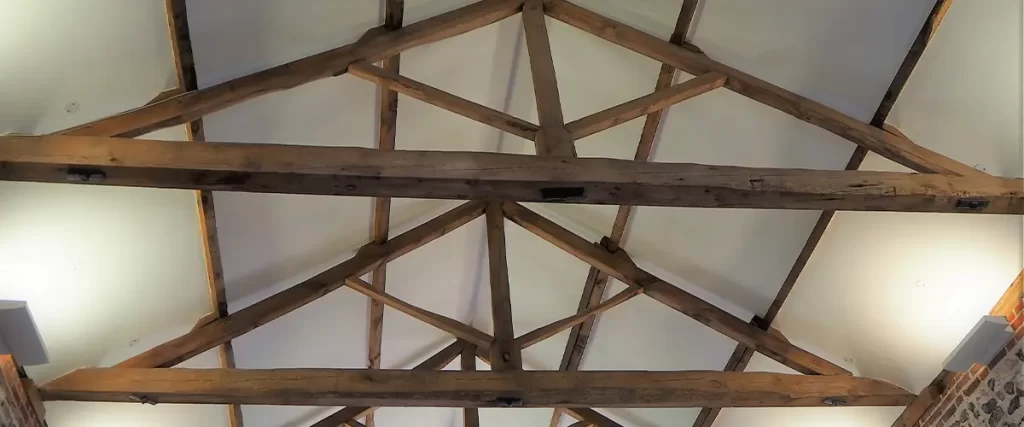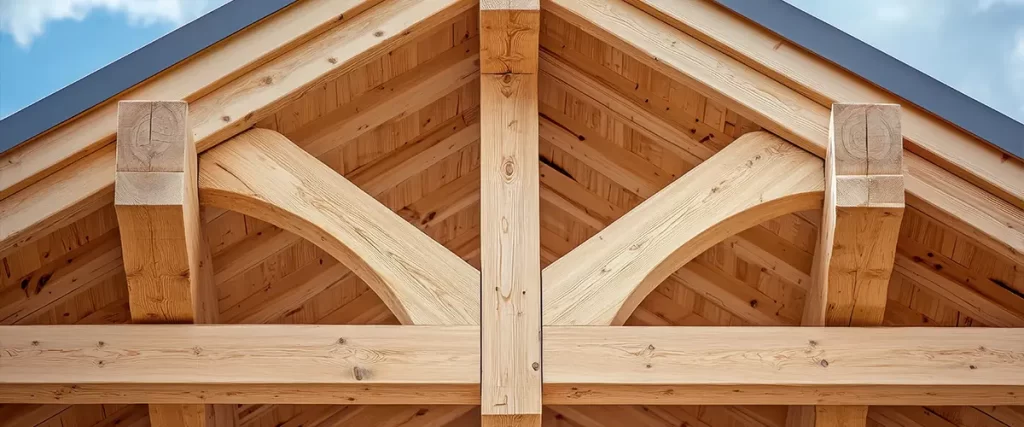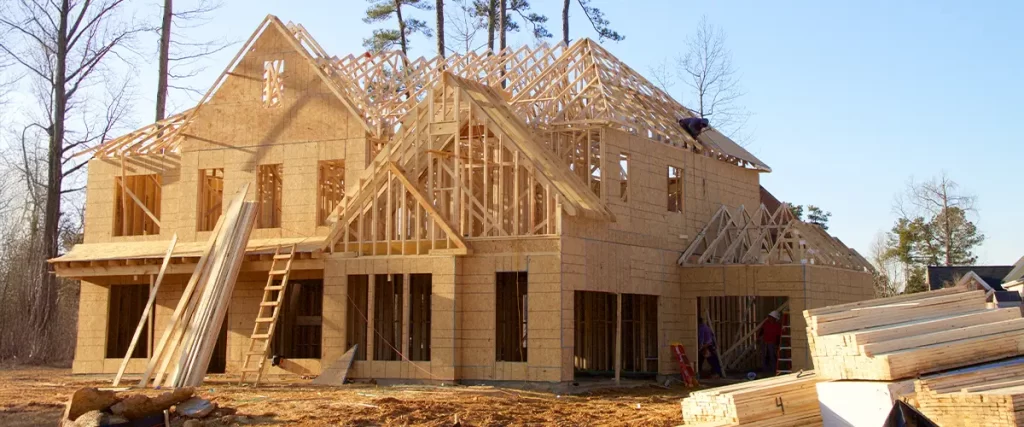When it comes to building or renovating a home, one part of the structure that often goes unnoticed but plays a huge role is the truss. Trusses are the framework that supports your roof, giving it shape, strength, and stability. They’re an essential part of the construction process and come in many different types, each suited for specific purposes.
But how do you know which truss is the best fit for your project? Don’t worry—we’ve got you covered. In this guide, we’ll break down the most common types of trusses, explain their uses, and help you understand why they’re important. Let’s get started!

What Are Trusses?
First things first: What exactly is a truss? A truss is a framework made up of interconnected beams, designed to support the weight of the roof and distribute it evenly. Trusses are usually made of wood or metal and are pre-engineered to provide strength while using fewer materials than traditional framing methods.
Why Are Trusses Important?
Trusses are crucial because they:
- Provide Support: They keep your roof steady and secure.
- Save Materials: The design of trusses minimizes the amount of wood or steel needed, making them cost-effective.
- Allow for Flexibility: Different truss designs suit different roof shapes and architectural styles.
Types of Trusses
There are many kinds of trusses, each with its unique features and benefits. Here’s a look at the most common types:
1. King Post Truss
The king post truss is one of the simplest trusses you’ll find. It’s made up of two angled beams that meet at the top, with a vertical post in the middle.
Best For:
- Small spans (typically under 20 feet).
- Simple, straightforward roof designs.
Advantages:
- Easy to construct.
- Cost-effective for small projects.
Limitations:
- Not suitable for large or complex roofs.

2. Queen Post Truss
Similar to the king post truss, the queen post truss has two vertical posts instead of one. This design provides more support, allowing it to span slightly larger areas.
Best For:
- Medium-sized roofs.
- Traditional home designs.
Advantages:
- Stronger than a king post truss.
- Offers a bit more flexibility in design.
Limitations:
- Still limited in terms of span compared to larger trusses.

3. Pratt Truss
The Pratt truss is a popular choice for many residential and commercial projects. It features diagonal beams that slope inward toward the center and vertical posts for support.
Best For:
- Roofs with long spans.
- Modern and industrial designs.
Advantages:
- Very strong and durable.
- Efficient use of materials.
Limitations:
- More complex to construct compared to simpler trusses.
4. Howe Truss
The Howe truss is the opposite of the Pratt truss in terms of its diagonal beams. Instead of sloping inward, the diagonals slope outward.
Best For:
- Bridges and long-span roofs.
- Heavy-duty applications.
Advantages:
- Great for heavy loads.
- Ideal for long spans.
Limitations:
- Bulkier design compared to other trusses.
5. Scissor Truss
The scissor truss gets its name from its crisscrossed beams that resemble a pair of scissors. It’s a popular choice for creating vaulted ceilings.
Best For:
- Vaulted or cathedral ceilings.
- Homes with an open, airy design.
Advantages:
- Allows for higher ceilings.
- Visually striking.
Limitations:
- More expensive due to its complex design.
6. Warren Truss
The Warren truss features a series of equilateral triangles, creating a strong and evenly distributed framework.
Best For:
- Roofs with moderate spans.
- Industrial and commercial buildings.
Advantages:
- Simple yet strong design.
- Efficient load distribution.
Limitations:
- Less visually appealing for residential use.
7. Fan Truss
The fan truss divides its beams into smaller sections, creating a fan-like pattern. This design helps distribute weight evenly while maintaining a sleek look.
Best For:
- Decorative purposes.
- Roofs with unique architectural designs.
Advantages:
- Strong and versatile.
- Aesthetic appeal for open ceilings.
Limitations:
- Can be more expensive due to its intricate design.
8. Flat Truss
The flat truss is, as the name suggests, a horizontal truss that supports flat or low-pitch roofs.
Best For:
- Modern flat-roof designs.
- Commercial buildings.
Advantages:
- Simple and functional.
- Ideal for minimalist designs.
Limitations:
- Not suitable for high-pitch roofs.
9. Bowstring Truss
The bowstring truss has a curved top chord, creating an arch-like appearance. It’s often used in large structures like warehouses or gymnasiums.
Best For:
- Large, open spaces.
- Unique architectural designs.
Advantages:
- Visually striking.
- Excellent for wide spans.
Limitations:
- Expensive and requires expert installation.
10. Parallel Chord Truss
This truss features parallel top and bottom chords connected by diagonal or vertical beams. It’s commonly used in floors and flat roofs.
Best For:
- Flooring systems.
- Low-slope roofs.
Advantages:
- Versatile and easy to install.
- Ideal for modern designs.
Limitations:
- Limited use for steep roof pitches.

How to Choose the Right Truss
Picking the right truss for your project depends on several factors:
- Roof Design: Does your roof have a steep pitch, or is it flat? The design will determine which truss works best.
- Span Requirements: Longer spans need stronger trusses like the Pratt or Howe truss.
- Aesthetics: If you want a decorative element, consider a bowstring or scissor truss.
- Budget: Simpler trusses like the king or queen post are more affordable, while complex designs like the scissor truss can cost more.
- Purpose: Whether you’re building a home, a barn, or a commercial space, each project has unique needs.
Trusses and Their Role in Architectural Style
Beyond their structural purpose, trusses also play a significant role in defining the overall look and feel of a building. Whether you want a modern aesthetic, a classic farmhouse charm, or a bold industrial vibe, the type of truss you choose can set the tone for your space.
Decorative Elements
For homes with exposed ceilings, trusses are more than just functional—they’re a key design feature. For example:
- Scissor trusses create dramatic vaulted ceilings, perfect for open-concept living spaces.
- Bowstring trusses add a graceful curve that stands out in both residential and commercial settings.
- Fan trusses offer intricate patterns that bring character to rustic or traditional homes.
Adapting to Your Roof Shape
The shape of your roof often dictates the best truss type. If your roof has a steep pitch, designs like the queen post or Pratt truss might be ideal. For flatter roofs, parallel chord or flat trusses provide both support and simplicity.
Blending Function and Style
Modern construction techniques allow for hybrid truss designs that balance function with aesthetics. For instance, you can use a combination of wood and steel to achieve a unique look while maintaining strength.
Ultimately, trusses provide endless opportunities to customize your home’s structure and style. With so many options, it’s easy to find one that fits your architectural vision while ensuring durability and practicality. Whether you’re building a minimalist space or a cozy cottage, there’s a truss design that will bring your project to life.
FAQs About Trusses
Which truss is best for residential homes?
It depends on the roof design and purpose. For smaller homes, a king or queen post truss is often ideal. If you’re looking for decorative elements or vaulted ceilings, consider a scissor truss.
Are wood or steel trusses better?
Wood trusses are more common in residential projects due to their affordability and natural look. Steel trusses are better for commercial or industrial spaces because of their strength and durability.
Can I use a custom truss design?
Absolutely! Custom trusses are a great option if you have specific architectural or aesthetic needs. A professional contractor can help design and install them.
How long do trusses last?
Properly maintained trusses can last the lifetime of the structure, whether they’re made of wood or steel. Regular inspections help ensure they stay in good condition.
Are trusses expensive?
Costs vary depending on the type and materials. Simple designs like king or queen post trusses are budget-friendly, while complex ones like bowstring or scissor trusses are more expensive.

Choosing the Right Truss for Your Project
Trusses are an essential part of any structure, and choosing the right type can make a big difference in both function and style.
- If you’re building a simple home or need a budget-friendly option, king or queen post trusses are great choices.
- For larger spans or unique designs, consider Pratt, Howe, or bowstring trusses.
- And if you’re aiming for a decorative or open feel, scissor and fan trusses add that extra wow factor.
No matter your project, understanding the strengths and purposes of different trusses can help you make an informed decision.
Let Tradecraft Homes Build the Perfect Roof for You
At Tradecraft Homes, we specialize in designing and installing trusses tailored to your needs. Whether you’re renovating, building a new home, or tackling a unique project, our team has the expertise to make your vision a reality.
Contact Tradecraft Homes today at (402) 378-9498 to schedule a consultation and take the first step toward a strong, beautiful roof for your home in Omaha, NE!
